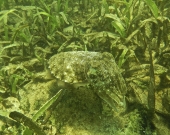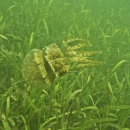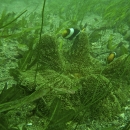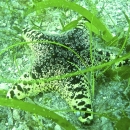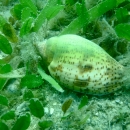Grants :: Small Grant Facilities :: Survey and assessment in Gulf of Mannar and Palk Bay to support strategy to conserve and manage seagrass habitats
Survey and assessment in Gulf of Mannar and Palk Bay to support strategy to conserve and manage seagrass habitats
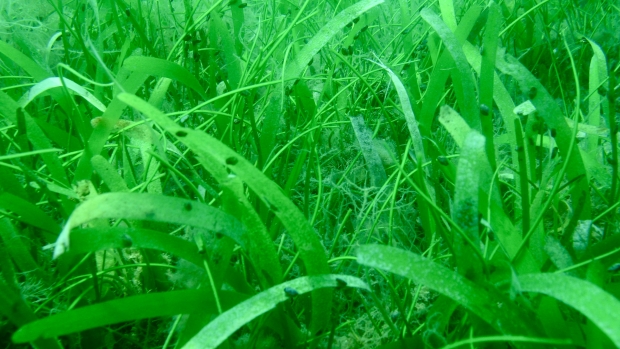
Seagrass beds in the Gulf of Mannar, Tamil Nadu, India, Gulf of Mannar, Tamil Nadu, India © SDMRI, 2012
Objectives
1. To develop a long term strategy for seagrass conservation in Gulf of Mannar and Palk Bay
2. To enhance the knowledge of dugongs in Gulf of Mannar
Background
Seagrass beds are productive and ecologically sensitive habitats of near shore environments encompassing many economically and ecologically important faunal species. The Gulf of Mannar and Palk Bay coasts of southeast India are home to luxuriant seagrass beds; 13 seagrass species are found in the Gulf of Mannar and Palk Bay region alone. These are important feeding ground for endangered marine mammals like dugongs, Dugong dugon, amongst other species. In addition, thousands of fisher folk depend on the fishery resources associated with these seagrass beds for their livelihoods. However, anthropogenic sources such as destructive fishing practices, like the use of bottom trawling, as well as the discharge of untreated sewage, are some of the major causes of seagrass destruction in the Gulf of Mannar and Palk Bay. Apart from species identification studies there has been little to no studies on the density and distribution of seagrass beds in this region. It is therefore important that a long term conservation strategy for seagrass and dugong habitats in Gulf of Mannar and Palk Bay is developed in order to protect and enhance their populations.
Target beneficiaries
Scientific researchers and coastal zone managers
State Forest and Fisheries Departments
Local fishing communities
Outputs
Amongst other findings the study determined that although the majority of species are the same between the Gulf of Mannar and Palk Bay, there are a few species that differ. Halophila decipiens was only found in Palk Bay. Holophilia ovate, Halodule univeris and Enhalus acoroides were found in the Gulf of Mannar but not Palk Bay. This insinuates that the management plans for the region will need to differ in some aspects with regard to ensuring that the varied floral diversity of the two regions is conserved. Further to this, it is apparent that dugong populations in both Gulf of Mannar and Palk Bay still persist. In both regions between 60 to 80% of respondents were convinced that the populations are dropping drastically, attributing trawling to being a major cause for this trend.
Recommendations from this study will be presented to the state forest departments for better management of the seagrass ecosystems in the Gulf of Mannar and Palk Bay. A detailed report of the project findings can be found on the right hand side of this webpage.
Accomplishments and challenges
India is a signatory to the Convention on Migratory Species (CMS) and the project is being undertaken by the Ministry of Environment and Forests and Wildlife Institute of India. Based on MFF India’s knowledge of the ecosystem and species and through the SDMRI Small Grant Project, surveys prepared by the UNEP/CMS Dugong Secretariat have been translated and carried out in the Gulf of Mannar and Palk Bay, Tamil Nadu to document dugong presence. It was determined that small populations still exist and important nesting and feeding habitats have been identified.
The overall results of this study indicate the need for rehabilitation of the once abundant seagrass meadows in this region. As the coastal population grows with a marked increase in dependence on marine and coastal resources, we must restore these valuable nurseries for commercially important organisms, to serve our own needs and the needs of some of the poorest communities in south India. As such comprehensive research must be conducted, where lacking on the following aspects:
- Fishing patterns in the region (both artisanal and mechanized), with particular relevance to the exploitation and stress of their impact on seagrass and related fauna.
- The effects of patch size on diversity, abundance and composition of fauna. Whilst continuous, extensive seagrass meadows are recognized for their importance in providing refuge for a variety of organisms, vegetated patches have not been widely investigated. Habitat patch size can be an important determinant influencing species diversity and biological interactions among species.
- Seasonal differences can strongly influence the salinity, temperature and other abiotic factors within the seagrass habitat. As such, the diversity, composition and abundance of seagrass beds within the region could be constantly (and perhaps naturally) changing over time; this will likely require differing management efforts and actions at different periods of time.
- Identification of suitable sites for rehabilitation and plantation of seagrass and established protocols for the same.
Contributions to cross-cutting themes
SDMRI capacity built fisher youth and fisherfolk on how to free dugongs from fishing nets in the case of accidental capture and report sightings in an accurate manner.
Lessons Learned
Due to time constraints and unavailability of local authorities and state forest officials to attend meetings, it was impossible to conduct stakeholder discussions to finalise the draft the strategy plans for conservation of seagrass in the region. It is intended that the data collected through this study will be published in an accredited scientific journal to further support the strategy document, following which SDMRI with support from MFF India will officially disseminate the document to relevant stakeholders for review.
There were some delays in data collection due to rough weather. In Gulf of Mannar, Rough weather prevails between April and September and this will have hindrance in data collection in the field. In Palk Bay, Rough weather prevails between October and March and this will have hindrance in data collection in the field
Related News
Supporting a sanctuary for seagrasses in the Gulf of Mannar and Palk Bay.
Gulf of Mannar and Palk Bay, Tamil Nadu, India 16 Sep 2013
Country: India
Topic: Knowledge for Management, Strategies for Management, Civil Society Engagement ...
Seagrasses are amongst the least understood marine ecosystems in India. Despite being classified as ecologically sensitive regions and protected under the Coastal Regulation Zone Act, they have been largely left out of education, research, and manage...
Project Facts
Country
Location
Gulf of Mannar and Palk Bay, Tamil Nadu, India
Topic
- Knowledge for Management
- Strategies for Management
- Civil Society Engagement
- Capacity Building
- Integrated Coastal Planning
- Capacity development
- Climate change
- Gender equality
- Knowledge management and communications
Duration
20th Dec 2011 to 28th Feb 2013
MFF Grant Amount
INR 855,700
Co-financing Partner
Co-financing from SDMRI: INR 397,750
Implementing Partner
Dr J K Patterson
Director
Suganthi Devadason Marine Reserach Institute (SDMRI)
edwardjkpatterson@sdmri.in
Related Images
Related Publications
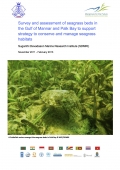
Survey and assessment of seagrass beds in the Gulf of Mannar and Palk Bay to support strategy to conserve and manage seagrass habitats
Author: SDMRI/MFF India
Publisher: SDMRI/MFF India
Posted on: 16th Sep 2013
Category:
Size: 1.9 MB
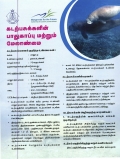
Capacity building youth to report dugong sightings
Author: SDMRI
Publisher: SDMRI/MFF India
Posted on: 16th Sep 2013
Category:
Size: 1.4 MB
